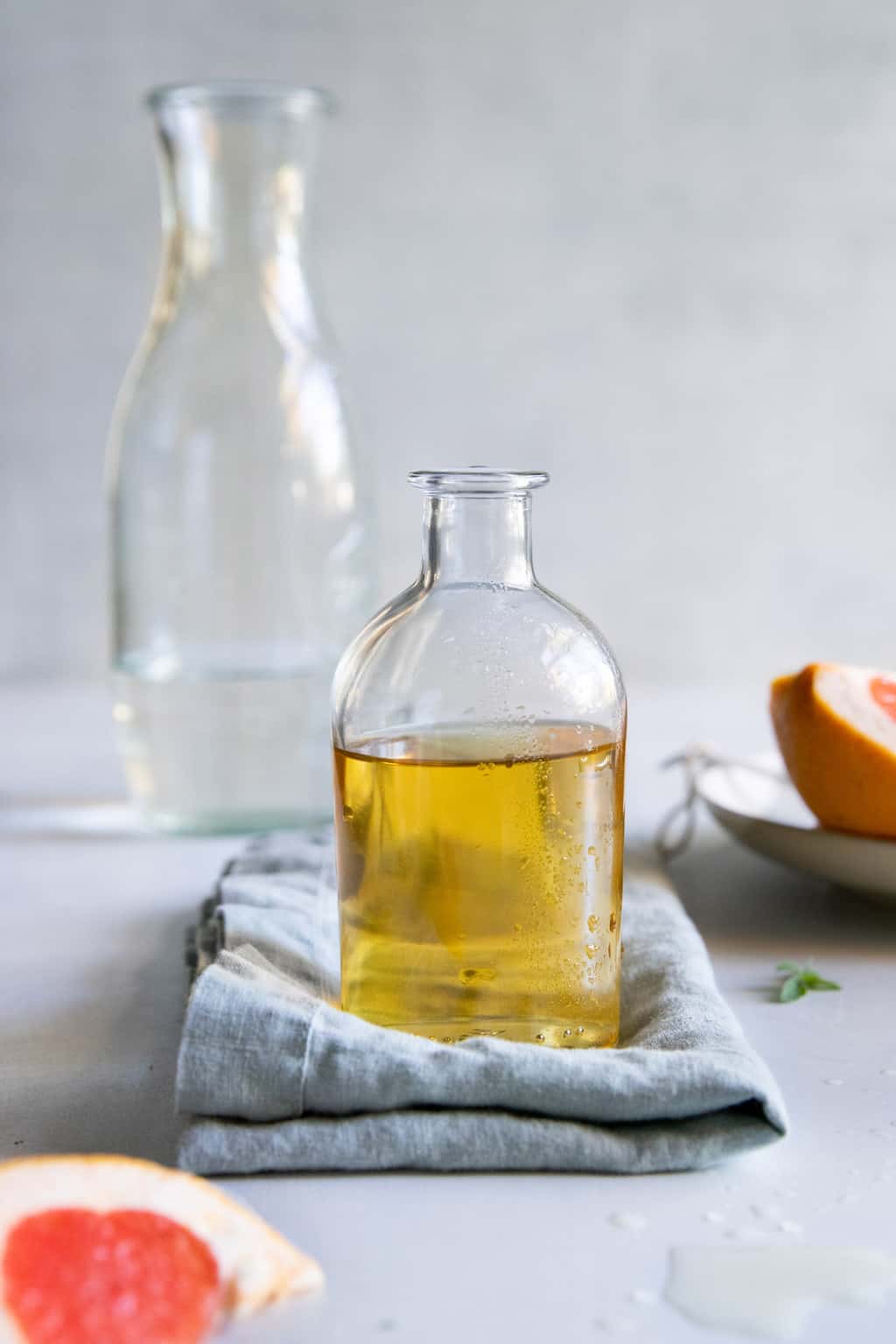If your scalp is dry and your hair frizzes all the time, you might check the pH level of your shampoo. The natural pH of the scalp is slightly acidic, ranging from 4.5 to 5.5. But most homemade shampoos are way too alkaline, which can cause irritation. These pH-balanced shampoo recipes with natural ingredients like aloe vera, honey, and coconut milk are gentle on the scalp while maintaining the hair's natural moisture balance.

The common problem with homemade shampoo (and many commercial shampoos) is that the pH tends to be extremely alkaline due to the soap (usually Castile soap), with levels around 10 to 11.
This alkalinity can soften the hair, but it also shocks the scalp, and it can take days for the scalp to return to its normal pH level. And if you shampoo daily, harsh cleansers strip away your hair's natural oils. Your scalp never has the opportunity to recover its natural pH, and you're left with dry, unhappy hair.
Using milder ingredients to formulate your own pH-balanced shampoo helps maintain the health of your hair and scalp.
Jump to:
Ingredients
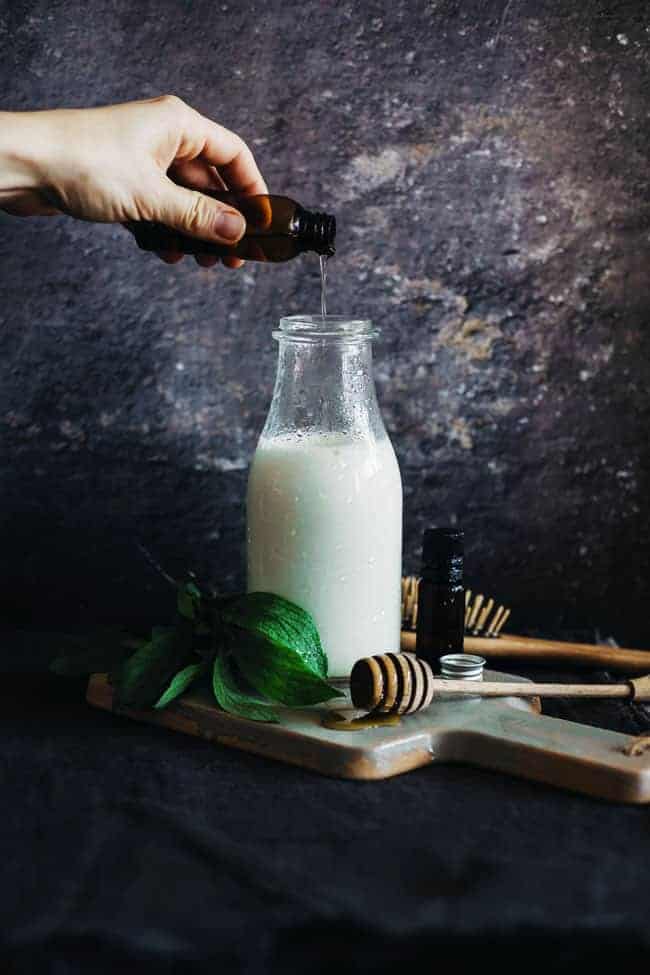
The aloe vera gel, coconut milk, vegetable glycerin, honey, and jojoba oil all have a naturally balanced pH and provide nourishment and moisturizing properties to the hair and scalp.
- Raw honey (pH 4–5): Raw honey has antibacterial properties and is nourishing and gentle.
- Sweet almond oil (pH 4.5–5.0): Sweet almond oil, rich in vitamin E, potassium, and magnesium, is great for breaking down dead skin cells at the base of the scalp.
- Coconut milk (pH 6.0–7.0): Coconut milk nourishes the hair while also detangling and conditioning.
- Aloe vera gel (pH 4.5): If you struggle with dandruff, you can add in 1 teaspoon of aloe vera gel to help with flakes. Aloe is also beneficial for unclogging hair follicles on the scalp.
- Citric acid (pH 3–6): An acidic ingredient, citric acid helps balance the higher pH of the shampoo.
See the recipe card below for quantities.
Instructions
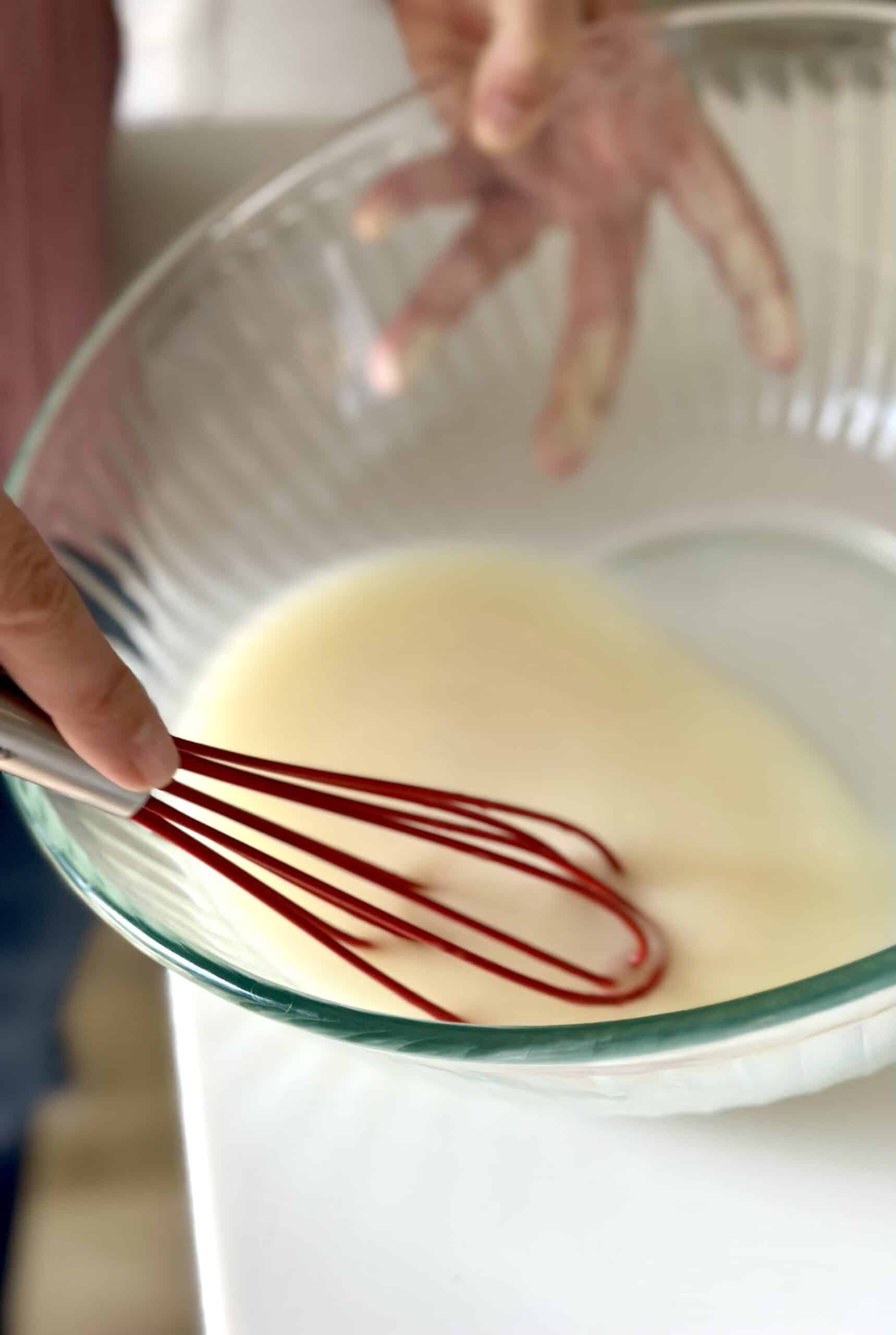
In a saucepan, heat the distilled water until warm but not boiling. Remove from the heat.
Add the aloe vera gel, coconut milk, vegetable glycerin, honey, and jojoba oil to the warm water. Stir well to combine.
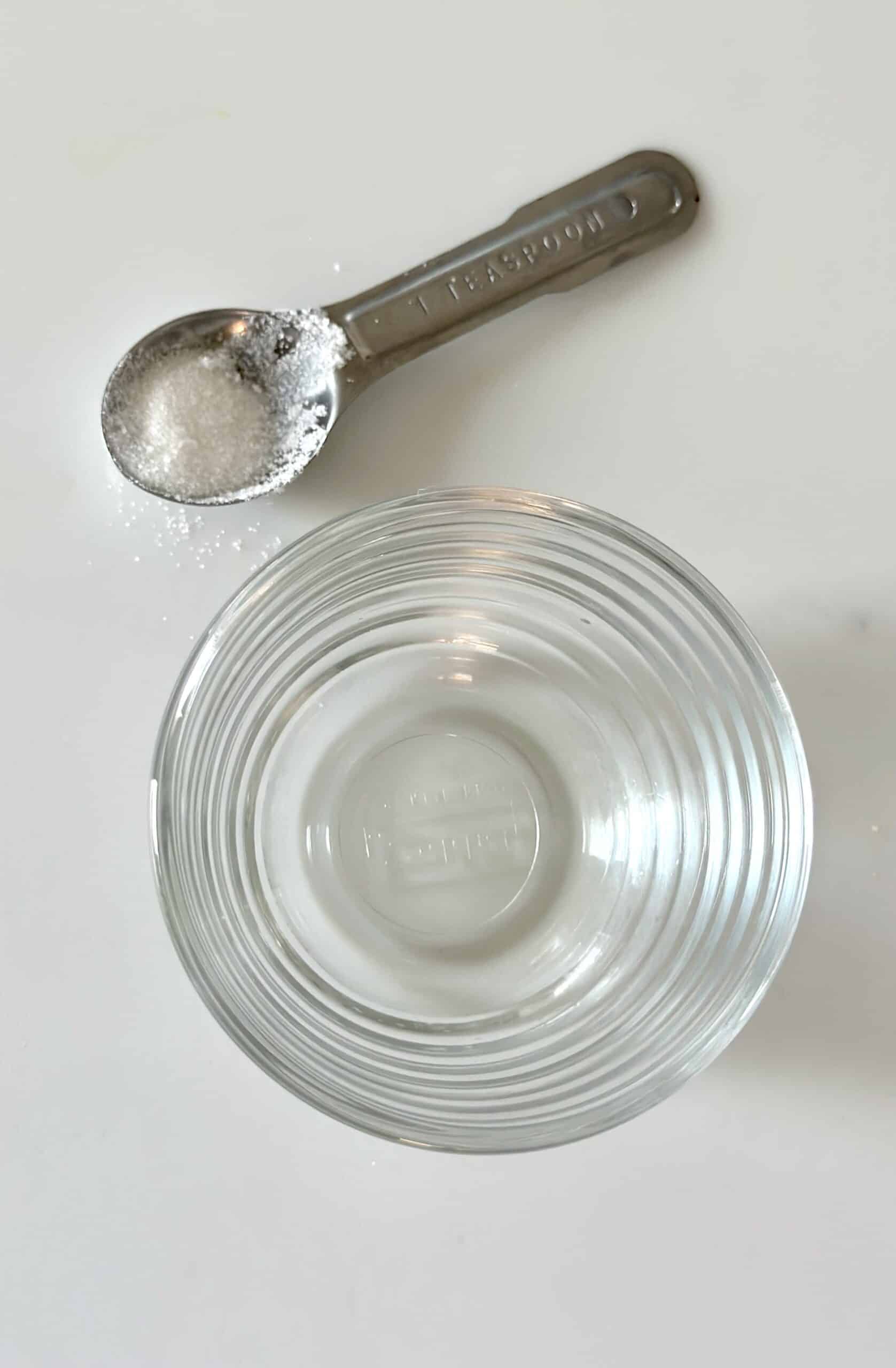
In a separate small bowl, dissolve the citric acid in a small amount of warm water. Gradually add this citric acid solution to the shampoo mixture, stirring continuously.
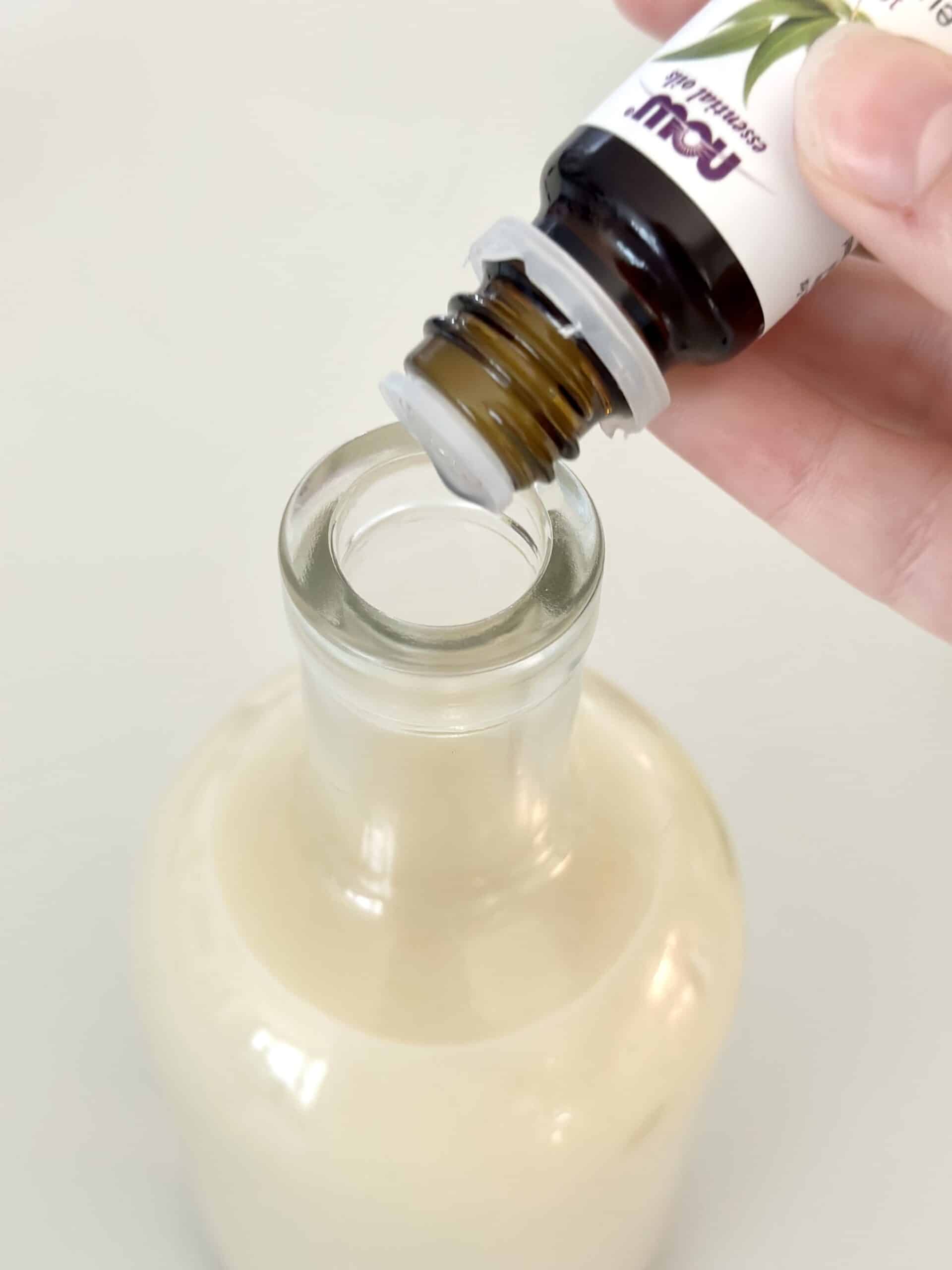
If desired, add 10–15 drops of essential oil.
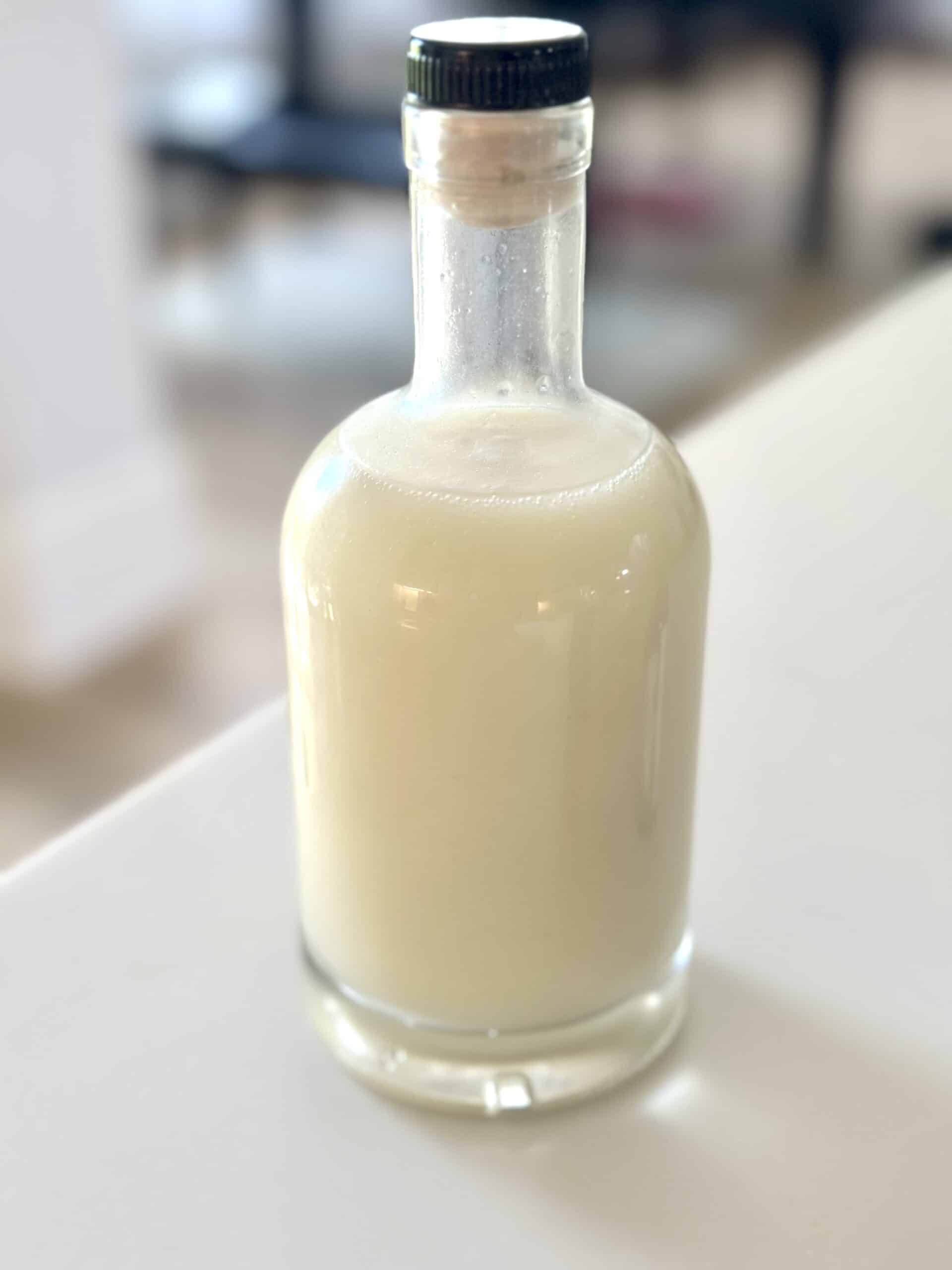
Allow the mixture to cool down to room temperature. Transfer the shampoo to a bottle or container for storage.
Hint: Remember to shake the bottle before each use. Wet your hair, apply a small amount of the shampoo to your scalp and hair, lather gently, and rinse thoroughly with warm water. Adjust the recipe according to your preferences and hair type.
Variation: pH-Balanced Shampoo That Suds
This recipe includes sudsing ingredients that are more alkaline, so we add citric acid to help lower the pH and achieve a balanced formulation.
—1 cup distilled water
—¼ cup liquid soap base (such as liquid Castile soap or a mild baby shampoo)
—1 tablespoon aloe vera gel
—1 tablespoon honey
—1 tablespoon jojoba oil
—2 teaspoons citric acid
—10–15 drops essential oil
1. In a bowl, combine the distilled water and liquid soap base. Mix well until they are thoroughly blended.
2. Add the aloe vera gel, honey, jojoba oil, and essential oil to the mixture. Stir to combine.
3. In a separate small bowl, dissolve the citric acid in a small amount of warm water. Gradually add this citric acid solution to the shampoo mixture, stirring continuously.
4. Continue stirring until all the ingredients are well mixed and the citric acid is fully incorporated.
5. Transfer the shampoo to a bottle or container for storage.
Variation: Lower pH Castile Shampoo
The pH of Castile soap typically ranges between 9 and 10, making it slightly alkaline. To lower it for homemade shampoo, you can add acidic ingredients like apple cider vinegar to shampoo.
—1 cup liquid Castile soap
—¼ cup aloe vera gel
—1 tablespoon melted or fractionated coconut oil
—1 tablespoon honey
—2 tablespoons apple cider vinegar (ACV)
—10–15 drops rosemary essential oil
1. In a bowl, combine the liquid Castile soap, aloe vera gel, coconut oil, and honey. Mix well.
2. Add the apple cider vinegar to the mixture. ACV is acidic and will help lower the overall pH of the shampoo.
3. If desired, add rosemary essential oil.
4. Mix all of the ingredients thoroughly to ensure they are well combined.
5. Transfer the shampoo to a suitable bottle for storage and use.
Testing pH
Test the final pH of your homemade shampoo using pH test strips to ensure it falls within the desired range for your hair.
You're looking for a pH level similar to that of the scalp, which typically ranges between 4.5 and 5.5.
Simply dip the pH test strip into the shampoo and compare the color change to the provided color chart to determine the pH level.
Storage
Homemade shampoo can last for several weeks to a few months if stored in a cool, dry place and kept away from excessive heat or humidity.
Natural preservatives like vitamin E oil, grapefruit seed extract, and rosemary extract can extend the shelf life of homemade shampoo. Or try Germaben, a natural preservative to help inhibit the growth of bacteria and fungi in lotions and shampoo recipes.
Usage
Start by using it once a week: Slowly integrate pH-balanced shampoo into your hair-washing routine once a week. Using a pH-balanced shampoo 2–3 times a week works pretty well for most people.
Massage the shampoo into the hair and scalp: Pour a small amount in your hand and use your fingertips to gently cleanse and break up dirt and product buildup on the scalp. Just remember that this shampoo will not lather because it does not contain soap. But it will balance the scalp, remove dead skin cells, and nourish your hair.
Start washing less often: If you're washing your hair daily, you might want to start reducing the frequency and start training your hair. Shampooing too frequently can strip the healthy oils from your hair and scalp.
Start by washing your hair every other day (dry shampoo can really help!), and then ideally stretch it to every third day, which is optimal for both hair and scalp health. Some extend hair washing even more than three days, with once-a-week washings commonplace, but this doesn't work for everyone.
A pH-balanced shampoo is generally safe to use on colored or chemically treated hair. In fact, it can help maintain the color and prevent fading or damage.
Top tip
The benefits of washing your hair less often have much to do with what happens after you wash your hair. Blow drying, flat irons, and all the heat applied to the hair during the styling process are damaging. An added benefit is the money saved on hair products that naturally happens when you use them less often.
Incorporating a silk pillowcase can retain moisture in the hair, reduce frizz and breakage, and help maintain overall smoothness. Adding biotin to your daily diet is believed to improve hair and nail growth.
FAQ
Maintaining the pH balance in shampoo helps keep the scalp and hair in a healthy condition. The natural pH of the scalp is slightly acidic, ranging from 4.5 to 5.5. Using a pH-balanced shampoo ensures that the product is gentle on the scalp, helps maintain the hair's natural moisture balance, and minimizes the risk of scalp irritation or dryness.
Making a pH-balanced shampoo at home allows you to have control over the ingredients and tailor the formulation to your specific hair and scalp needs. Many commercial shampoos can be harsh and alkaline, which may strip away the natural oils from the hair and disrupt the scalp's natural pH balance. By making your own pH-balanced shampoo, you can use milder ingredients to support and maintain the health of your hair and scalp.
To determine the pH of a shampoo, you can use pH test strips or a pH meter. These tools are readily available and can provide an accurate measurement of the pH level of your shampoo. Simply dip the pH test strip into the shampoo or use the pH meter according to its instructions to obtain the pH reading.
The ideal pH range is generally between 4.5 and 5.5, which is close to the natural pH of the scalp. This range helps to maintain the scalp's acidity, supports the hair's moisture retention, and keeps the hair cuticles smooth and healthy.
Some common ingredients that can help lower the pH of a shampoo include citric acid, apple cider vinegar (ACV), and lactic acid. These acids can be added in small amounts to adjust and lower the pH of the shampoo formulation.
Yes, vinegar, particularly apple cider vinegar (ACV), can lower the pH of the shampoo formulation. However, it's important to use it in moderate amounts to avoid an overly acidic product that may cause scalp irritation.
You can add small amounts of alkaline ingredients to increase its pH. Baking soda or sodium bicarbonate can be used in minimal quantities to raise the pH of the shampoo. However, it's essential to make adjustments gradually and retest the pH to avoid going beyond the desired pH range.
Using a shampoo with an imbalanced pH can potentially cause side effects. If the shampoo is too alkaline, it may lead to dryness, frizziness, and an open cuticle, making the hair prone to damage. On the other hand, if the shampoo is too acidic, it can cause scalp irritation, redness, or excess oil production. Maintaining a balanced pH helps to avoid these negative effects.
pH-Balanced Coconut Honey Shampoo Recipe
Equipment
- Medium bowl
- 14 oz jar or squeeze bottle
- Small saucepan
Materials
- 1 cup distilled water
- ¼ cup aloe vera gel
- ¼ cup coconut milk
- 1 tablespoon honey
- 1 tablespoon glycerin
- 1 tablespoon jojoba oil
- 1 teaspoon citric acid
- 10-15 drops essential oil (ylang ylang, rosemary, or lavender)
Instructions
- In a saucepan, heat the distilled water until warm but not boiling. Remove from heat.
- Combine the jojoba oil and essential oils in a small bowl. Stir together.
- Add the aloe vera gel, coconut milk, glycerin, honey and jojoba/essential oil mixture to the warm water. Whisk all of the ingredients together.
- In a separate small bowl, dissolve the citric acid in a small amount of warm water. Gradually add this solution to the shampoo mixture, stirring as you pour it in.
- Cool the shampoo to room temp. Remove a small amount and test the pH level. If needed, add more citric acid.
- Rransfer to a s bottle or container for storage. Store at room temperature or in the fridge. Shake well before each use.
- To use, pour a small amount in your hand. Use your fingertips to massage the shampoo into your hair and scalp to gently cleanse and break up dirt and product buildup.






